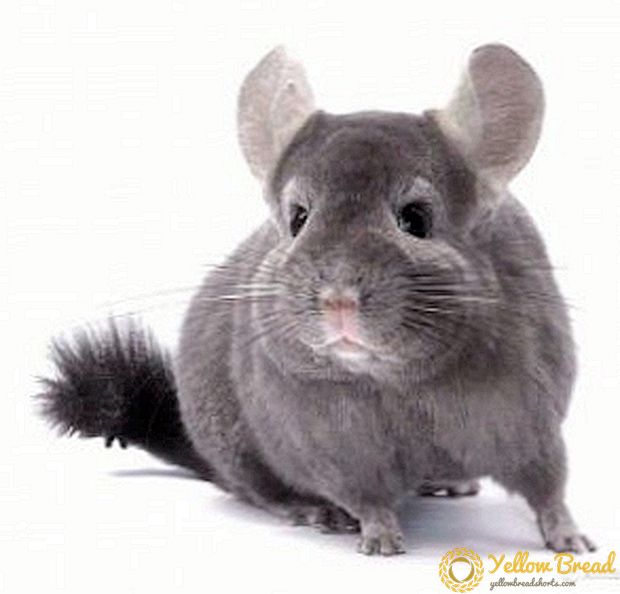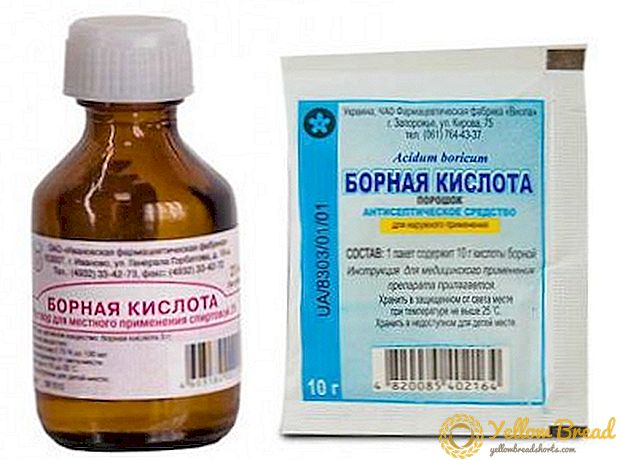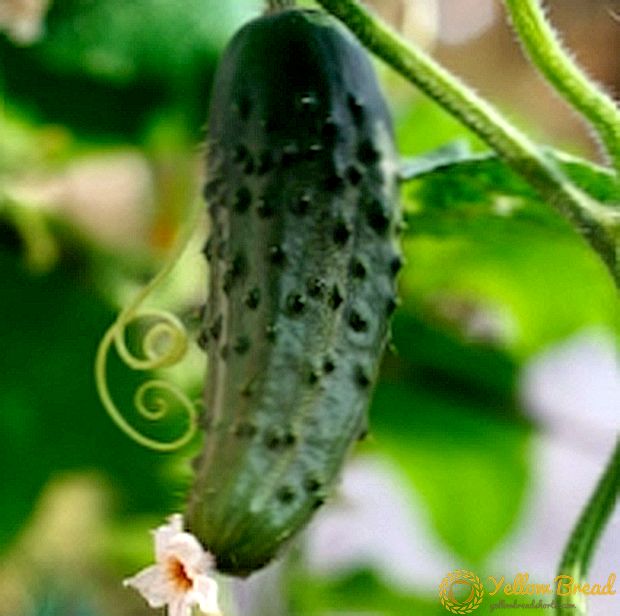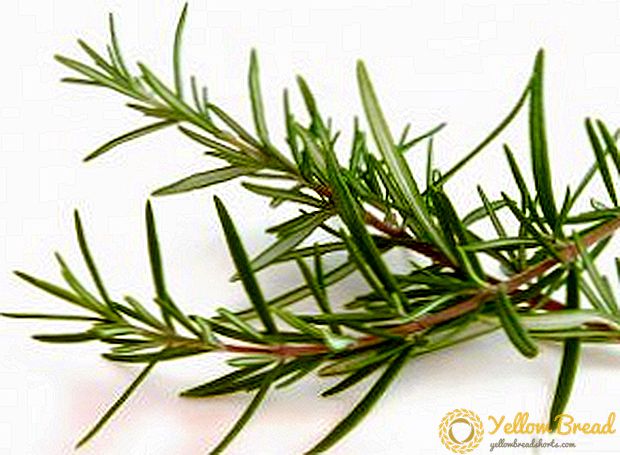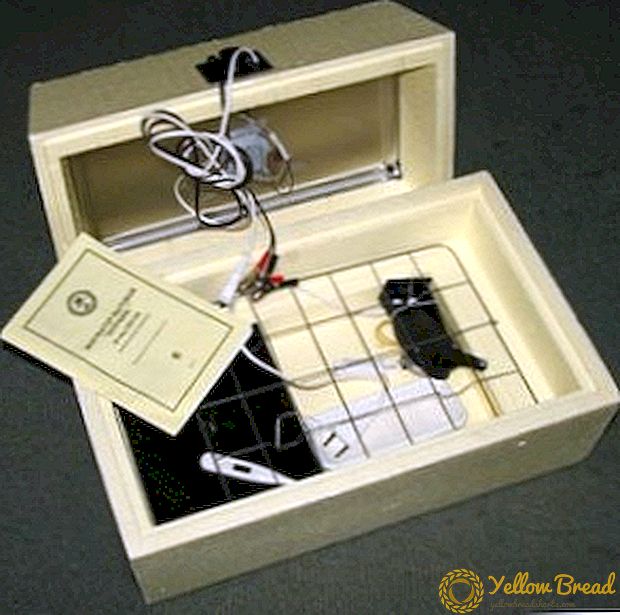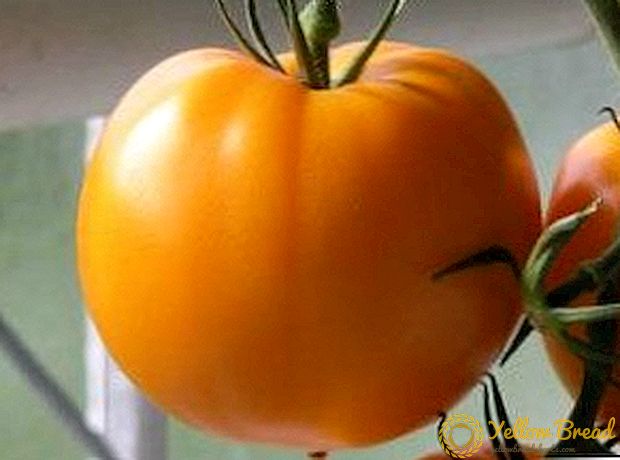 If you have long dreamed of growing high-quality and tasty tomato fruits on your plot, which have practically no flaws, you should get acquainted with the best King of Siberia tomato variety, according to gardeners.
If you have long dreamed of growing high-quality and tasty tomato fruits on your plot, which have practically no flaws, you should get acquainted with the best King of Siberia tomato variety, according to gardeners.
- Description
- Bushes
- Fruit
- Characteristic variety
- Advantages and disadvantages
- Terms and scheme of sowing seeds
- Grade Care
- Possible diseases and pests
Description
To appreciate the popular variety of tomatoes "King of Siberia" will help its detailed description and description, collected in this material.  The variety of tomatoes "King of Siberia" is middle-ripening and refers to the standard types of plants that bear fruit in any, even cold, climate.
The variety of tomatoes "King of Siberia" is middle-ripening and refers to the standard types of plants that bear fruit in any, even cold, climate.
Bushes
The indeterminate bushes of the royal variety reach a height of 160-180 cm. And, despite their scanty foliage, they have beautiful, similar to maple, leaves.
Fruit
The fruits of the "King of Siberia" are heart-shaped, slightly flattened, large and fleshy (from 500 to 800 g), golden yellow, bright color. The amount of dry matter at least 3%, with low water content. 
Characteristic variety
In addition to the main description, the tomato "King of Siberia" is characterized by a very high and abundant yield. With scrupulous, high-quality care from one bush of tomatoes can be collected about 5 kg, and from a square meter - up to 15
Advantages and disadvantages
The advantages of this tomato culture are:
- high taste;
- unpretentiousness to the soil composition;
- resistance to diseases and pests;
- high level of fruiting.

- only fresh fruits are used;
- requires a special approach to the cultivation of bushes (special backup for the shoots);
- must be regularly and abundantly watered
Terms and scheme of sowing seeds
Sowing seeds of Siberian tomatoes should be carried out in March, spreading them evenly on the soil packed into the container.
For transplanted seedlings it is supposed to be phased care:
- Initially, planting should be mulled with a small layer (1 cm) of peat, and then watered with warm water through a sieve;
- The container with the seedlings is covered with cellophane film and removed before germination in a warm place with a constant air temperature of up to +25;
- After the appearance of the first shoots, the film must be removed, and the container should be moved to a well-lit, sunny place with a reduced temperature of about +15. This is done so that the shoots are not over-stretched;
- After the emergence of the shoots of two true leaves, they must dive into separate cups;
- It is important to remember about timely watering and fertilizing seedlings with mineral fertilizers (2-3 times before planting in the ground);
- A week before the transplantation of young bushes in the ground, it is desirable to carry out regular procedures of hardening;
- Growing up and matured seedlings, at least 65 days old, should be transplanted to a permanent habitat.




Grade Care
It is not particularly difficult to care for the fresh landings of the "King of Siberia", but it is better to perform various manipulations carefully and in a timely manner:
- it is necessary to form a bush in 2 stalks, having received the second stalk from the stepchild formed under the first brush;
- Tomato plants are fed with complex mineral and water-soluble fertilizers 2-3 times during the growing season;
- watering the bushes should be carried out several times a week, always in the evening, after sunset;
- regular loosening and weeding of the soil will provide the tomatoes with good access of oxygen to the root system and future high yields.

Possible diseases and pests
Despite the high resistance of this crop to various diseases and pests, some adverse effects are still possible:
- if the fruit is damaged by the greenhouse whitefly, the plant must be treated with the preparation "Confidor" (1 ml per 10 l of water);
- from the spider mite will help the usual soap solution;
- greenhouse tomatoes are often exposed to brown spot disease. For the prevention of this scourge, you need to try to observe the correct moisture regime, not allowing the increase in the required indicators. If the plants are already sick, they should be treated with drugs "Barrier" or "Barrier".
 Judging by the numerous positive reviews, the variety of tomatoes "King of Siberia" has long occupied one of the leading positions in the cultivation of tomatoes by experienced gardeners and pleases many people with its excellent taste and beautiful plants.
Judging by the numerous positive reviews, the variety of tomatoes "King of Siberia" has long occupied one of the leading positions in the cultivation of tomatoes by experienced gardeners and pleases many people with its excellent taste and beautiful plants.

